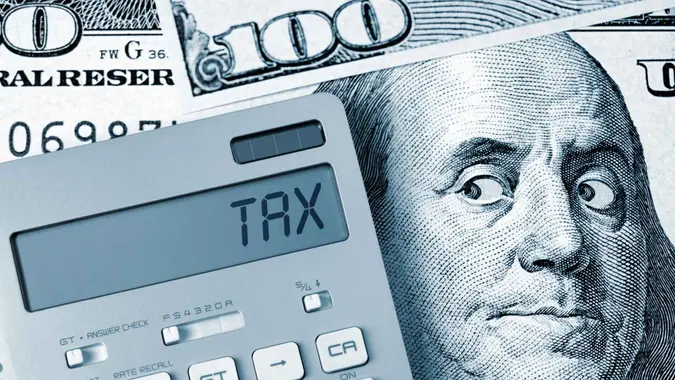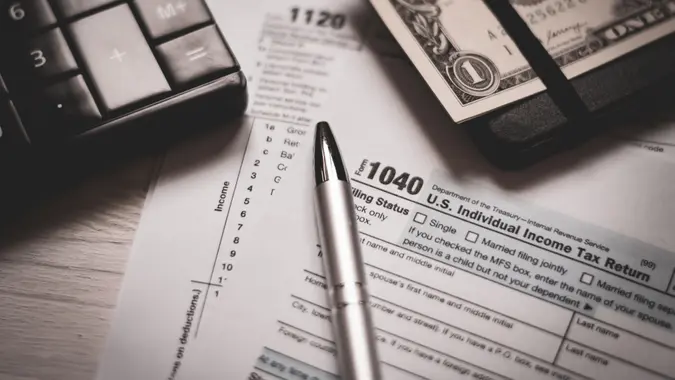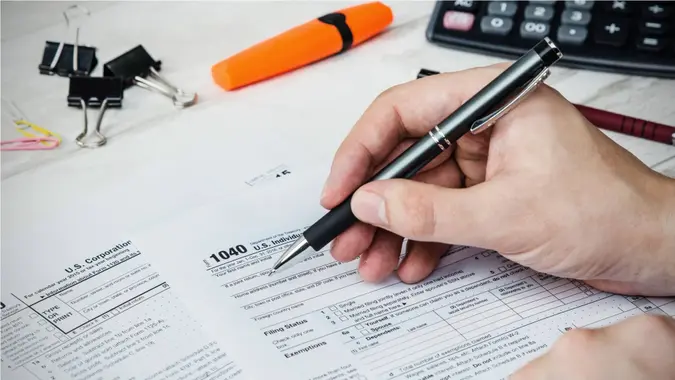7 Things You Need To Know When Filing Your Tax Return This Year

Commitment to Our Readers
GOBankingRates' editorial team is committed to bringing you unbiased reviews and information. We use data-driven methodologies to evaluate financial products and services - our reviews and ratings are not influenced by advertisers. You can read more about our editorial guidelines and our products and services review methodology.

20 Years
Helping You Live Richer

Reviewed
by Experts

Trusted by
Millions of Readers
The IRS is returning to something resembling normalcy this tax season after three years of delays, postponements and heavy backlogs that began during the COVID-19 pandemic.
You’ll get extra time to complete your returns in 2023 thanks to a favorable calendar. That’s one of several things to keep an eye on as you complete your tax returns this year. Here’s a look at the rest:
1. You Have a Few Extra Days To File This Year
The deadline for filing your tax returns in 2023 is April 18. That’s because the normal filing date of April 15 falls on a weekend, and Washington, D.C., celebrates Emancipation Day on Monday, April 17.
2. Roth IRA Contributions Extend Until April 18
According to the IRS, you can make 2022 IRA contributions until April 18, 2023.
3. Your Return Might be Processed Quicker
The IRS is processing returns and refunds faster this year than in 2022. As of March 24, it processed 1.9% more returns compared with the same time last year and issued 2.6% more refunds, according to the agency’s data. That will come as welcome news to taxpayers who had to wait a long time on refunds in prior years due to heavy backlogs tied to the pandemic, as well as staffing shortages and budget cuts.
To ensure the best service, the IRS recommends the following:
- File as early as possible
- File electronically
- Sign up for direct deposit if they haven’t already
- Don’t call — visit IRS.gov for the latest news and updates
4. Refund Timelines Vary
The IRS says most e-filed tax refunds are direct deposited into taxpayer bank accounts in as little as 10 days, according to the CPA Practice Advisor website. However, taxpayers with the Earned Income Tax Credit or Child Tax Credit typically have their refunds delayed by about a monthwhile the IRS confirms eligibility for these credits.
If your IRS income tax refund is delayed after you’ve filed, contact your tax professional or use the IRS’s “Where’s My Refund?” tool to check the status of your refund.
5. Free Tax Help Comes With Income Limits
Certain taxpayers can qualify for assistance filing their taxes through Free File, a program that lets you prepare and send your returns with software from the IRS’s third-party partners. To qualify, you must have an adjusted gross income (AGI) of $73,000 or less. Free file is designed to let software do all the work. Here are some features, according to the IRS:
- Free federal return if you qualify
- Answer simple questions
- Guided preparation does all the math
- Tax filing done on an IRS partner site
- Some state tax preparation and filing are free
If your income is above $73,000, you can still qualify for Fillable Forms, which doesn’t offer guided preparation. Instead, you have to be able to prepare your own returns using only IRS publications, forms, and instructions. Both options will not only save you money, but you’re more likely to receive your refund sooner as well.
If you don’t qualify for any of those IRS programs, you’re still not out of luck. You can take advantage of many other cheap and free tax filing software and services.
6. Your Tax Bracket Might Have Changed
There are still seven tax brackets with a top rate of 37%, but the income ranges have changed to adjust for inflation. Here are the updated brackets and rates for tax year 2022:
| Single Filers | |
|---|---|
| Income | Tax Rate |
| $0 to $10,275 | 10% |
| $10,276 to $41,775 | 12% |
| $41,776 to $89,075 | 22% |
| $89,076 to $170,050 | 24% |
| $170,051 to $215,950 | 32% |
| $215,951 to $539,900 | 35% |
| $539,901 or more | 37% |
| Married Filing Jointly | |
|---|---|
| Income | Tax Rate |
| $0 to $20,550 | 10% |
| $20,551 to $83,550 | 12% |
| $83,551 to $178,150 | 22% |
| $178,151 to $340,100 | 24% |
| $340,101 to $431,900 | 32% |
| $431,901 to $647,850 | 35% |
| $647,851 or more | 37% |
| Married Filing Separately | |
|---|---|
| Income | Tax Rate |
| $0 to $14,650 | 10% |
| $14,651 to $55,900 | 12% |
| $55,901 to $89,050 | 22% |
| $89,051 to $170,050 | 24% |
| $170,051 to $215,950 | 32% |
| $215,951 to $539,900 | 35% |
| $539,901 or more | 37% |
7. Changes in Credits and Deductions
Unlike 2020 and 2021, there were no new stimulus payments in 2022, according to the IRS. This means taxpayers shouldn’t expect to get an additional payment in their 2023 tax refund. However, the agency said in a February 23, 2023 notice that taxpayers might still qualify for temporarily expanded eligibility of the Premium Tax Credit, which is a refundable credit that helps eligible individuals and families cover the premiums for their health insurance purchased through the Health Insurance Marketplace. To get this credit, you must meet certain requirements and file a tax return with Form 8962, Premium Tax Credit.
In addition, eligibility rules changed to claim a Clean Vehicle Credit under the Inflation Reduction Act of 2022. To learn more, visit this IRS site.
Andrew Lisa contributed to this article.
 Written by
Written by  Edited by
Edited by 

























